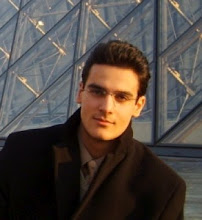Mies van der Rohe

Mies van der Rohe, at the age of seventy-three, and a long way from his nativ Aachen, has become, for many among the middle and younger generation of architects, the living embodiment of a moral absolute. Quite what this is they would most of them find it hard to define, and since architecture seldom prospers alongside moral absolutes, it is just as well. What they do see quite clearly is a poet of metal and glass, of the fin edge and the moulded profile, above all a master of the rectilinear in plan, elevation and volume and in the relationship of building to building. His approach is oppositite to that of Frank Loyd Wright and no two buildings could better ewemplify the difference than the two master’ first major works to be built in New York which have risen, by a coincindence, almost simultaneously; No. 375 Park Avenue (the Seagram building) is sheathed in autumnal bronze; crisp and rectilinear it soars to the sky without emphatic termination.
The Guggenheinm Museum on Fifth Avenue is curvaceously moulded, ground-hugging, even ground-penetrating with a spiral terminated by a glass dome, reading as much downward as upward. The two buildings represent the polarities of modern architecture, metallurgy and the machine serving the purposes of the multi-cellular building, on the hand, and the structural versatility of reinforced concrete used to make a formal statement about a unique problem, on the other; both approaches are as valid as they are necessary.
However true it may be that the famous Lake Shore Drive towers are the fulfilment of the dreram of a glass skyscraper that had exercised Mies in Berlin as early as 1919, however true it may be that he is ‘always the same Mies’, the fact remains that his coming to America in 1938 marks a real break in his career, and his American architecture is very unlike that which he had earlier done in Europe. The earlier body of work had consisted mostly of small buildings and larg projects--except for the Weissenhof-seidlung of 1927, but, as Germany’s intellectual life contracted towards the null-point of 1933, even small commissions became scarce and it was left to Mies, as its las director, to turn the key on what remained of the Bauhaus--and on what remained of an adventure, a generation, a dead world, In its own good time the New World offered him the chance to realize his large projects; offered him the necessary patrons, the materials, the techniques, the engineers and collaborators--and the IIT ampus, as its buildings were completed one by one over the years on his twelvefoot planning grid, revealed to US architects an extreme point in architectural integrity, a right rectangular aesthetic of structur and space; This aesthetic, summed up in two basic Miesian sayings, ‘Wenige ist Mehr” and “Beinah Nichts” (Less is More, and Almost Nothing) has been called the ‘Absence of Architectural’, but on a middle generation of Americans it has reacted as a positive presence, and as Mies has gone on developing it, refining and subtilizing its structural forms and formal structure, a gaint ghost has followed it at a safe and not-quite-comprehending distance--the curtain wall industry.
For, though Mies’s achievement coul hardly be more personal, the superficial appearance of the buildings in which that achievement is embodied has facilitated the visual acceptance of a repetitive, endless, grid facade, while the work of two architects most ready to admit his influence, Eero Saaineb and Gordon Bunshaft, has effectively bridged the gap between one man’s vision and an industrial product.
American could not have nurtured Mies, Europe could not have fulfilled his promise; he has, perhaps, gained more, and given more, to the US than any other “émigré” outside the realm of atomic physics. He has produced a lyricism of two constituent US psychological fact--unlimited spac and unmitigated tchnology--in a from that is neither provincial nor crude, and can be held up to the rest of the world as an example of a convincing machine-age architecture. The rest of the world has taken note and, wherever architectural tthought is on the move, the influence of Mies--American Mies--can be felt.
FARNSWORTH HOUSE 1950 (Mies van der Rohe)

barcelona pavillion


0 Comments:
Enregistrer un commentaire
<< Home